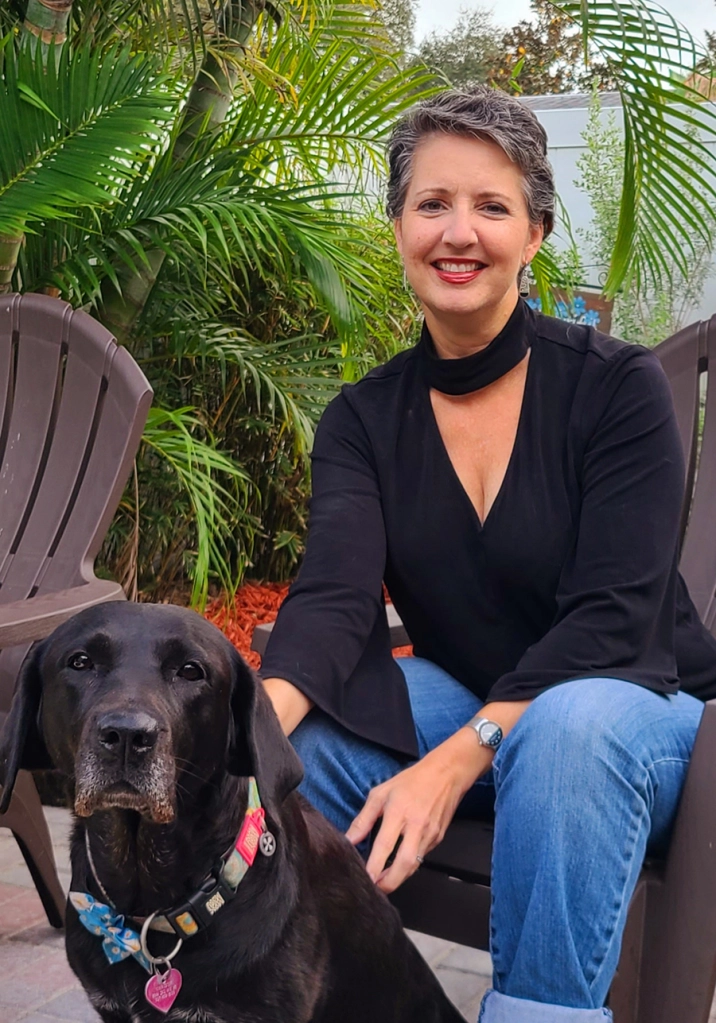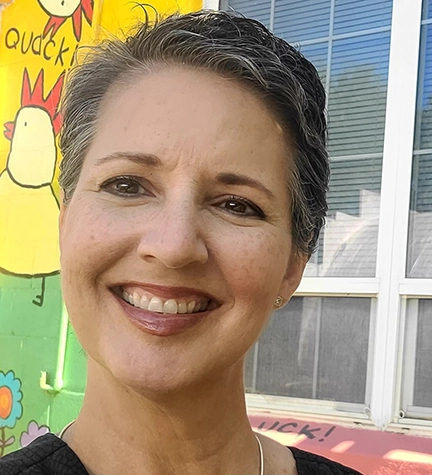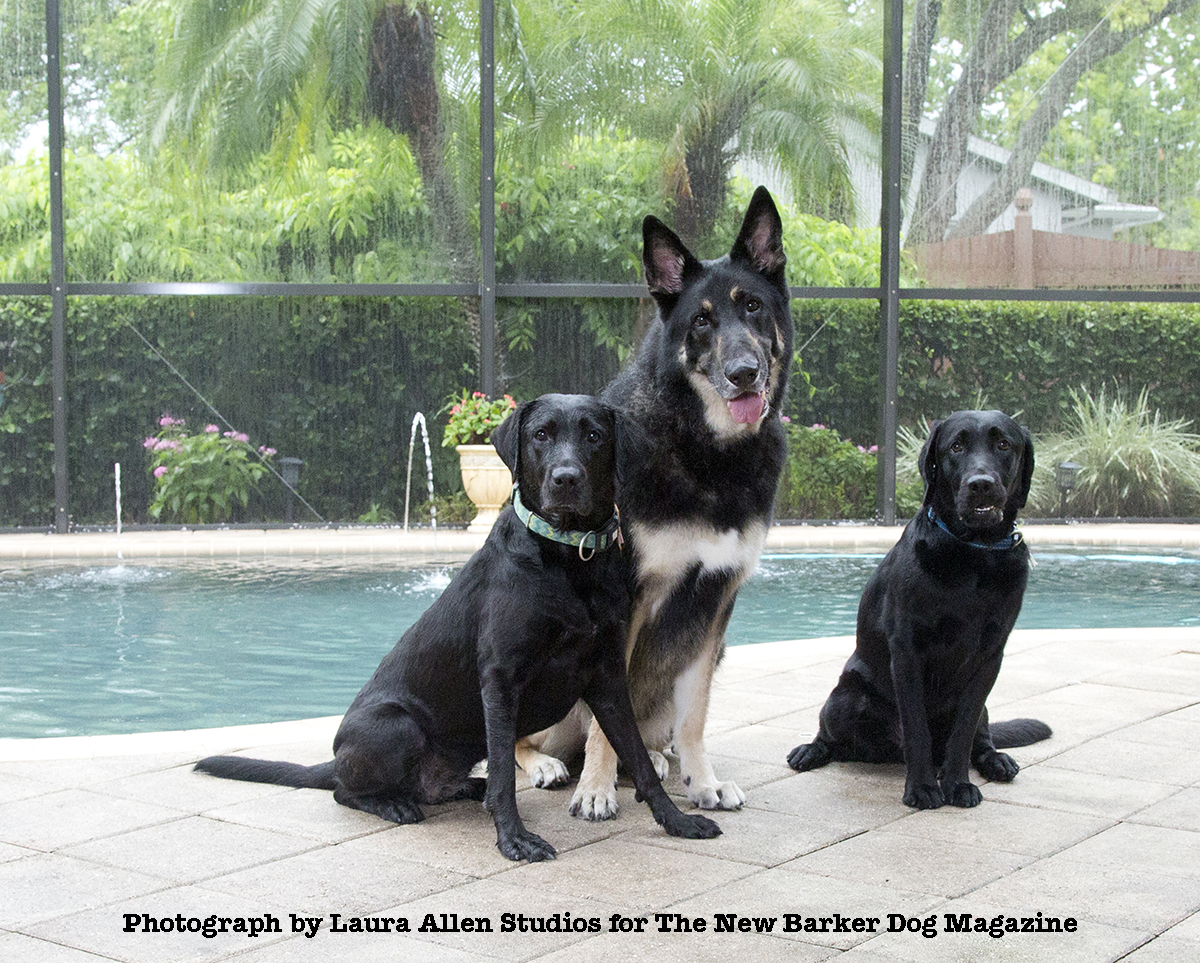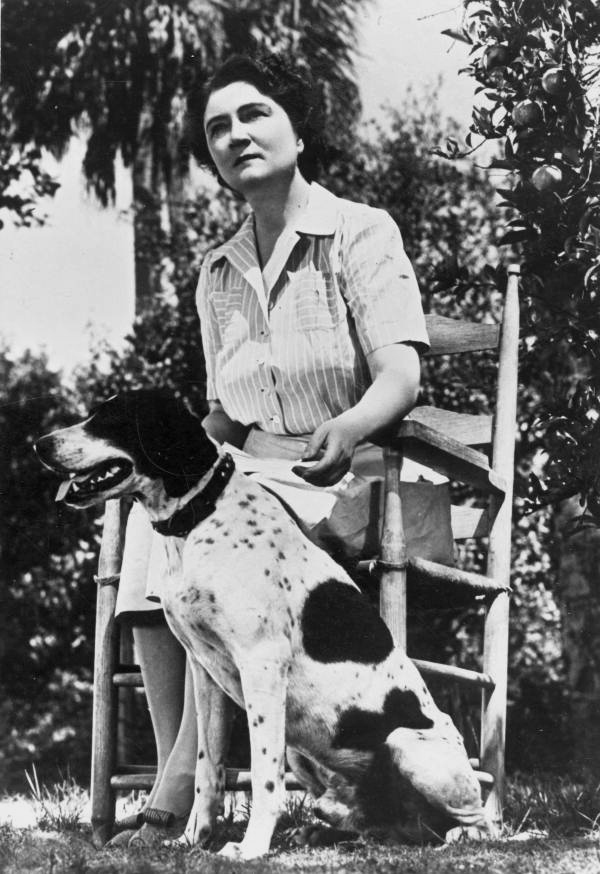by Kerry Kriseman, for The New Barker
The tiny 10-week-old black Labrador puppy nuzzled my ear with knife-like baby teeth while her sweet puppy breath erased the scent of my Coco Chanel Mademoiselle perfume. Her mission the day we met Christie was to snuggle and be held, like any baby. Her life’s mission was to lead. It’s what she was born to do.
As I held her like a baby, with her pointy head resting over my left shoulder and her arms folded into my chest, I thought about her destiny. We didn’t name her. In their grief, our friends donated money to name her Christie to honor their 16-year-old niece who died from injuries sustained in a car accident. She had been an elite swimmer, and beloved daughter, sister, and friend. She was a leader among her peers, the kind of friend who responded to texts in the middle of the night when her friends were sad. She was compassionate and kind.
Our Christie had big shoes to fill. For the next year, we loved her and trained her, hoping she would join the elite corps of Southeastern Guide Dogs that are matched with visually impaired individuals. She was to be ours for just a year before she returned to Southeastern Guide Dogs’ 23-acre campus in Palmetto, Fla., for her next phase of training.
Christie was the seventh pup our family raised for Southeastern. She made us feel like we were the best raisers. As Mary Poppins said about herself: “She was practically perfect in every way.” Stay off the furniture? Check. Sit politely at the door before entering or exiting? Check. Stay when told? Check. Training Christie was effortless.
Every one of the roughly 60 commands she learned was for one purpose: to be someone’s eyes in a world that had gone dark.
Sometimes, we are lucky enough to hear from the people who receive our dogs. They are resilience personified in an unkind world that robbed them of their vision. They describe their lives before blindness, how they lost their sight, what led them to get a guide dog. These dogs change lives even before they leave campus with their new forever friend.
After Christie came home with us, I read about Christie the swimmer and how she impacted others’ lives through her altruism. Our Christie would someday to be the light in someone’s dark world. We were sure of it.
Everyone says that returning the pup to Southeastern for advanced training is like taking your firstborn to college. What it really feels like is ripping a Band-Aid off the hairiest part of your arm. We wince, cry, and mourn. That was tough, but the news that Christie had torn her ACL and would need surgery, was worse. Her destiny was forever changed. She had to find a new purpose, just like the people whose vision is stolen from them.
When I learned that Christie would not become a guidebecause of her injury, we jumped at the chance to adopt her. We loved having her as a forever family member, but we knew she needed a mission. While Southeastern designated her an Ambassador, which meant she might be called upon to appear at events to promote the organization’s mission,I wanted to do more with this pup who was still eager to learn and serve. I completed an easy course through Alliance of Therapy Dogs so that Christie could become a certified therapy dog. An application, background screening and interview at a park was all it took for Christie to become certified.
To heal from her injuries, Christie had to be resilient. And because of Covid-19, we too have had to be resilient. It has challenged all of us to adapt, adjust, learn, and heal. Itderailed our plans to visit hospitals and nursing homes this year, but it elevated the vital work of our frontline workers. They care for the sickest patients, many of whom suffer alone in hospitals because of the deadly virus. They put themselves first in dangerous situations.They are resilient. Day after day.

As a community, we must do what we can to honor these workers. The Museum of Fine Arts in St. Petersburg hosts Frontline Workers First Friday each month, in gratitude for the selfless work first responders perform. Christie and I will be at the Museum this Friday, Dec. 4, 10 a.m. to 12 p.m., to greet and thank frontline workers.
Animals, especially dogs, teach us more about resilience than any self-help book or Google search. Like the people Christie was born to serve, her destiny was changed the moment she took a wrong step while playing with her kennel mates. My dream for her was quashed. But we can always find a job to do, a way to be of service that helps others.
In this new year, let us all find ways to be the bright spot for someone else, to shine the light when days are dark, and remain resilient in a world that never stops surprising us.

About Kerry: She is a communications professional in the non-profit arts industry. The Florida native lives in St. Petersburg, FL with her husband, City of St. Petersburg Mayor Rick Kriseman, their two children, Jordan and Samuel, their two dogs, Christie and Jake, and their current puppy from Southeastern Guide Dogs, Hannah.

























You must be logged in to post a comment.